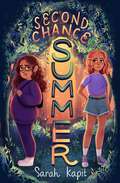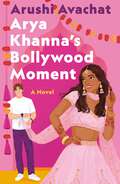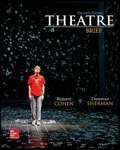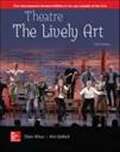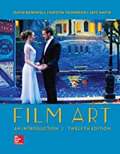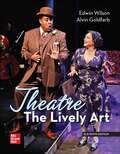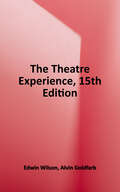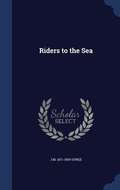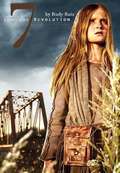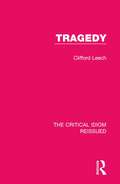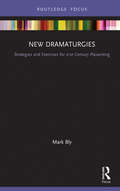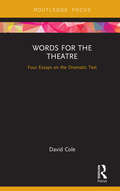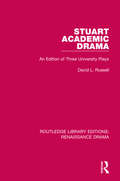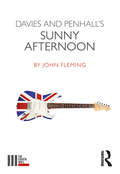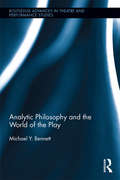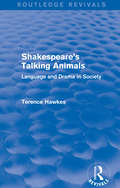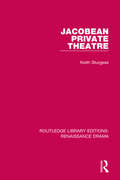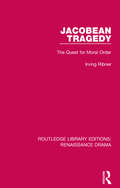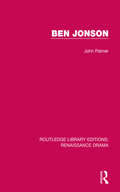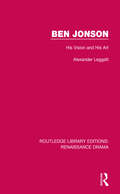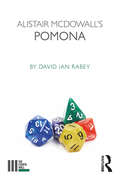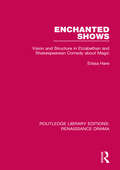- Table View
- List View
Second Chance Summer
by Sarah KapitBreaking up is hard to do, especially when it's with your best friend. Can these two ex-besties survive summer camp together? Maddie and Chloe have always been best friends, until last year, when Chloe’s popularity and budding fame as an actor left Maddie in the dust one too many times. Their friendship is over, and they’re both ready to move on.But when the girls arrive at summer camp, they discover that the universe isn’t ready to let go of this friendship just yet: They’re cabinmates, and each of them has to spend the summer with her ex–best friend. Is it time to try again, or are they doomed to drift apart for good?
Broadway Bird
by Alex TimbersA charming and heartfelt picture book about a little bird who dreams of making it big on Broadway, from Tony Award-winning Broadway director Alex Timbers.What Louisa loved most about living in Times Square wasn't the buzzzz of the city...No, it was that she could sing as loud as she wanted. She could sing all day and she could sing all night. Louisa was truly a Broadway bird.Louisa is a tiny parakeet with a HUGE dream: to be a Broadway star. But no matter what she does, everyone keeps telling her she's too small to make it big! When a chance at her big break comes, Louisa learns that no matter how small you are, with a little talent and a lot of hard work, you can do anything - even be on Broadway!With colorful, charming illustrations by artist Alisa Coburn, this heartfelt picture book from renowned Broadway director Alex Timbers is about persistence, believing in yourself, and, of course, the magic of Broadway.
Arya Khanna's Bollywood Moment
by Arushi AvachatSave the Date meets Never Have I Ever in this sparkling debut rom-com about a high school senior whose life suddenly gets a Bollywood spin when her sister gets engaged.Shaadi preparations are in full swing, which means lehenga shopping, taste testing, dance rehearsals, and best of all, Arya’s sister Alina is home. The Khannas are together again, finally, and Arya wants to enjoy it. So she stifles her lingering resentment towards Alina, plays mediator during her sister’s fights with their mother, and welcomes her future brother-in-law with open arms. (Okay, maybe enjoy isn't exactly right.)Meanwhile at school, Arya’s senior year dreams are unraveling. In between class and her part-time gig as a bookshop assistant, Arya struggles to navigate the aftermath of a bad breakup between her two best friends and a tense student council partnership with her rival, the frustratingly attractive Dean Merriweather.Arya is determined to keep the peace at home and at school, but this shaadi season teaches Arya new realities: Alina won’t always be in the bedroom down the hall, Mamma’s sadness isn’t mendable, friendships must evolve, and life doesn’t always work out like her beloved Bollywood movies. But sometimes, the person you least expect will give you a glimpse of your dream sequence just when you need it most.Structured like a Bollywood film (entertaining intermission included!) Arya Khanna’s Bollywood Moment will make you swoon, laugh, cry, think, nod your head in agreement, and quite possibly make you get up and dance.
Theatre Brief Eleventh Edition
by Robert Cohen Donovan ShermanRobert Cohen and Donovan Sherman's Theatre Brief, 11th Edition, continues to provide an insider's guide to the world of theatre, where students are given a front-row seat. This lively introduction to theatre offers equal measures of appreciation of theatrical arts, history of performance, and descriptions of the collaborative theatrical crafts. Coverage of design, acting, and directing, as well as photo essays, provide a behind-the-scenes look at professional theatre artists performing their craft. Play excerpts and outlines represent a wide range of theatrical achievement. Theatre Brief offers a vast updating of contemporary theatre in America and abroad.
Theatre: The Lively Art
by Edwin Wilson Alvin GoldfarbTheatre: The Lively Art remains the best-selling program for Theatre Appreciation courses. With its hallmark focus on preparing future audience members, students will learn how theatre functions, how it should be viewed and judged, and the transition behind any performance they may attend.
Film Art: An Introduction
by David Bordwell Kristin Thompson Jeff SmithFilm is an art form with a language and an aesthetic all its own. Since 1979, David Bordwell, Kristin Thompson and now, Co-Author, Jeff Smith's Film Art has been the best-selling and most widely respected introduction to the analysis of cinema. Taking a skills-centered approach supported by examples from many periods and countries, the authors help students develop a core set of analytical skills that will enrich their understanding of any film, in any genre. In-depth examples deepen students' appreciation for how creative choices by filmmakers affect what viewers experience and how they respond. Film Art is generously illustrated with more than 1,000 frame enlargements taken directly from completed films, providing concrete illustrations of key concepts. Along with updated examples and expanded coverage of digital filmmaking, the twelfth edition of Film Art delivers SmartBook, first and only adaptive reading experience currently available, designed to help students stay focused, maximize study time and retain basic concepts.
Theatre: The Lively Art
by WilsonSeveral qualities set Theatre: The Lively Art apart from other introductory texts. A particularly important element is our emphasis on the audience. All students reading the book are potential theatregoers, not just during their college years but throughout their lives. We have therefore attempted to make This new edition is an ideal one-volume text to prepare students as future audience members. It will give them a grasp of how theatre functions, of how it should be viewed and judged, and of the tradition behind any performance they may attend. Lively Art allows instructors to focus on both the elements of the theatre and the history of the theatre. It also focuses on today's diverse and global theatre. In addition to serving as an ideal text for nonmajors, Theatre: The Lively Art will prepare students who wish to continue studies in theatre, as majors, minors, or students from other disciplines who take advanced courses.
The Theatre Experience
by Edwin Wilson Alvin GoldfarbThe Theatre Experience, 15e prepares students to be well-informed, well-prepared theatre audience members. With an audience-centered narrative that engages today’s students, a vivid photo program that brings concepts to life, and features that teach and encourage a variety of skill sets, students master core concepts and learn to think critically about theatre and the world around them. As a result, students are better prepared for class and better prepared for theatregoing. The textbook is noted for its lively writing style and for helping students recognize how theatre relates to our everyday lives.
Συρανό δε Μπερζεράκ
by Edmond RostandThis is the famous 19th-century play about a great swordsman and poet with the unseemly large nose. Although he is feared by opponents, he cannot court the woman of his dreams, except through anonymously sent poems, which makes for a romantic and adventurous tale.
Riders to the Sea
by J. M. SyngeThis work has been selected by scholars as being culturally important, and is part of the knowledge base of civilization as we know it. This work was reproduced from the original artifact, and remains as true to the original work as possible. Therefore, you will see the original copyright references, library stamps (as most of these works have been housed in our most important libraries around the world), and other notations in the work. This work is in the public domain in the United States of America, and possibly other nations. Within the United States, you may freely copy and distribute this work, as no entity (individual or corporate) has a copyright on the body of the work. As a reproduction of a historical artifact, this work may contain missing or blurred pages, poor pictures, errant marks, etc. Scholars believe, and we concur, that this work is important enough to be preserved, reproduced, and made generally available to the public. We appreciate your support of the preservation process, and thank you for being an important part of keeping this knowledge alive and relevant.
Seven for the Revolution
by Rudy RuizA young Latina struggles to communicate with her immigrant grandfather when her mother prohibits her from speaking Spanish. <P><P>A boy grapples with the slippery nature of laws, rules and ambition along the US-Mexico border in his quest for the American Dream. <P><P>An elderly woman's land, life and loyalties are divided by a controversial border fence. <P><P>A South American immigrant encounters racism and love in an LA elevator as turmoil swirls around a radical change in immigration policy. <P><P>In post-apocalyptic New York, a Latina fights to defend the last vestiges of a nation's pride as disgruntled creditors threaten to confiscate the Statue of Liberty.
The Essential Theatre
by Oscar G. Brockett Robert J. Ball John Fleming Andrew CarlsonThe Eighth Edition of THE ESSENTIAL THEATRE will help you get your students excited about theatre. The combined authorship of an authoritative theatre historian and his former student, an active theatre historian himself, make this the book perfect for your introductory theatre course. In the 35 years since it was first published, THE ESSENTIAL THEATRE has established a reputation as one of the most comprehensive, authoritative surveys of the theatre in academia. Now in a new full color format with many representations of current and classic performances, this text will encourage your students to become active theatergoers and fans. THE ESSENTIAL THEATRE works in tandem with its companion anthology, PLAYS FOR THEATRE. The scripts in PLAYS serve as a foundation for discussion of the various types of theatrical experience explored in the text.
Tragedy (The Critical Idiom Reissued #1)
by Clifford LeechFirst published in 1969, this work examines the genre of Tragedy from its origins in ancient Greece, to the modern day. Beginning with an overview of the meaning of tragedy in Europe through the ages, it goes on to explore common aspects of tragedies such as the tragic hero, the chorus and unities, catharsis, peripeteia, anagnorisis and suffering. This book will be of interest to anyone studying European drama and literature.
New Dramaturgies: Strategies and Exercises for 21st Century Playwriting (Focus on Dramaturgy)
by Mark BlyIn New Dramaturgies: Strategies and Exercises for 21st Century Playwriting, Mark Bly offers a new playwriting book with nine unique play-generating exercises. These exercises offer dramaturgical strategies and tools for confronting and overcoming obstacles that all playwrights face. Each of the chapters features lively commentary and participation from Bly’s former students. They are now acclaimed writers and producers for media such as House of Cards, Weeds, Friday Night Lights, Warrior, and The Affair, and their plays appear onstage in major venues such as the Roundabout Theatre, Yale Rep, and the Royal National Theatre. They share thoughts about their original response to an exercise and why it continues to have a major impact on their writing and mentoring today. Each chapter concludes with their original, inventive, and provocative scene generated in response to Bly’s exercise, providing a vivid real-life example of what the exercises can create. Suitable for both students of playwriting and screenwriting, as well as professionals in the field, New Dramaturgies gives readers a rare combination of practical provocation and creative discussion.
Words for the Theatre: Four Essays on the Dramatic Text (Focus on Dramaturgy)
by David ColeIn Words for the Theatre, playwright David Cole pursues a course of dramaturgical self-questioning on the part of a playwright, centred on the act of playwriting. The book’s four essays each offer a dramaturgical perspective on a different aspect of the playwright’s practice: How does the playwright juggle the transcriptive and prescriptive aspects of their activity? Does the ultimate performance of a playtext in fact represent something to which all writing aspires? Does the playwright’s process of withdrawing to create their text echo a similar process in the theatre more widely? Finally, how can the playwright counter theatre’s pervasive leaning towards the ‘mistake’ of realism? Suited to playwrights, teachers, and higher-level students, this volume of essays offers reflections on the questions that confront every playwright, from an author well-versed in supplying words for the theatre.
Stuart Academic Drama: An Edition of Three University Plays (Routledge Library Editions: Renaissance Drama)
by David L. RussellAlthough not much is known about the three Stuart plays in this edition, which was first published in 1987, we can ascribe them to one of the English universities, and each is indicative of a distinctly different influence on the Renaissance academic drama. Heteroclitanomalonomia is part of a minor subgenre referred to as the academic play. It demonstrates the predominance of language or rhetoric studies in the period and its very subject is of purely academic interest. Gigantomachia displays the continuing interest of the Renaissance in classical mythology. And A Christmas Messe follows a more homely tradition, a farcical personification of the mundane. This title will be of interest to students of English Literature, Drama and Performance.
Davies and Penhall's Sunny Afternoon
by John FlemingWhen ‘You Really Got Me’ exploded on Swinging London in 1964, the Kinks forever changed the course of rock ’n’ roll. Ray Davies and Joe Penhall’s Olivier Award-winning Sunny Afternoon (2014) covers the band’s formative years of 1964–7, when four working- class North London lads broke through to become one of the most unlikely and influential rock bands of the 1960s. Mixing the comic adventures of ‘Dave the Rave’ with the touching introspection of Ray’s sometimes fragile psyche, Joe Penhall’s script weaves Ray Davies’ songs, both the hits and lesser-known works, into one of the finest jukebox musicals of the new millennium. Drawing on a wealth of background material, John Fleming examines the blend of events and songs selected, reconsidering the relationship between biography and drama to shed new light on the Kinks and the musical that tells their story.
Analytic Philosophy and the World of the Play (Routledge Advances in Theatre & Performance Studies)
by Michael Y. BennettTheatrical characters’ dual existence on stage and in text presents a unique, challenging case for the analytical philosopher. Analytic Philosophy and the World of the Play re-examines the ontological status of theatre and its fictional objects through the "possible worlds" thesis, arguing that theatre is not a mirror of our world, but a re-creation of it. Taking a fresh look at theatre’s key elements, including the hotly contested relationships between character and actor; onstage and offstage "worlds"; and the play-text and performance, Michael Y. Bennett presents a radical new way of understanding the world of the play.
Routledge Revivals (1973): Language and Drama in Society
by Terence HawkesFirst published in 1973, this book is about Shakespeare, language and drama. The first part introduces some common ideas of anthropology and linguistics into an area where they serve as a base for the discussion of usually literary matters. It attempts to link language to our experience of speech — examining its range, texture, and social functions. In part two, the author argues that in Elizabethan culture there was a greater investment in the complexities and demands of speech due to the widespread illiteracy of the time. It examines eight of Shakespeare’s plays, together with one of Ben Jonson’s, in light of their concern with various aspects of the role of spoken language in society.
Jacobean Private Theatre (Routledge Library Editions: Renaissance Drama)
by Keith SturgessIn this scholarly and entertaining book, first published in 1987, the author tells the story of Jacobean private theatre. Most of the best plays written after 1610, including Shakespeare’s late plays such as The Tempest, were written for the new breed of private playhouses – small, roofed and designed for an aristocratic, literary audience, as opposed to the larger, open-air houses such as the Globe and the Red Bull, catering for a popular, ‘lowbrow’ audience. The author discusses the polarisation of taste and the effect it had on literary criticism and theatre history. This title will be of interest to students of English Literature, Drama and Performance.
Jacobean Tragedy: The Quest for Moral Order (Routledge Library Editions: Renaissance Drama)
by Irving RibnerThe work of dramatists such as George Chapman, Thomas Heywood, Cyril Tourneur, John Webster, Thomas Middleton and John Ford can profitably be studied as attempts to construct a new moral order in response to the absence or weakening of the religious sanction. In this study, first published in 1962, the author examines these texts in detail, and throws a great deal of light on the plays as plays. This title will be of interest to students of English Literature, Drama and Performance.
Ben Jonson (Routledge Library Editions: Renaissance Drama)
by John PalmerWhile most critical writing on Jonson concentrates on the plays, poems or masques seen in isolation, this title, first published in 1981, ranges across the genres to explore Jonson’s vision as a whole. The author points to the inner connections that make of the rich variety of Jonson’s writing a single coherent body of work. We see Jonson exploring the relations between culture and society, the difficulties of ideal virtue in a far from ideal world, and above all the problems of art itself. Combining a wide-ranging discussion of Jonson’s interests with a detailed examination of his major works, this book provides a balanced critical introduction to one of the most complex and fascinating figures in English Literature.
Ben Jonson: His Vision and His Art (Routledge Library Editions: Renaissance Drama)
by Alexander LeggattWhile most critical writing on Jonson concentrates on the plays, poems or masques seen in isolation, this title, first published in 1981, ranges across the genres to explore Jonson’s vision as a whole. The author points to the inner connections that make of the rich variety of Jonson’s writing a single coherent body of work. We see Jonson exploring the relations between culture and society, the difficulties of ideal virtue in a far from ideal world, and above all the problems of art itself. Combining a wide-ranging discussion of Jonson’s interests with a detailed examination of his major works, this book provides a balanced critical introduction to one of the most complex and fascinating figures in English Literature.
Alistair McDowall's Pomona (The Fourth Wall)
by David Ian Rabey‘It’s all real. All of it. Everything bad is real’ - Moe Alistair McDowall’s Pomona was first staged in 2014 and won properly startling, and startled, acclaim. Its edgeland setting permits a surrealistic disengagement of linear forms of time, which is both dreamlike and wildly funny; nightmarish and ominously enveloping. The play has as its imaginative springboard a landscape which is both real and surreal. It offers an unforgettable journey into radical uncertainty, alongside unpredictable action that presents and questions the forms by which all too much of British life is lived. Rabey offers us a wild plunge into this modern English urban rabbit hole, a haunting and bewildering high-stakes hunt for meaning and value, set in a gothic noir Manchester, possibly dystopian (or possibly not).
Enchanted Shows: Vision and Structure in Elizabethan and Shakespearean Comedy about Magic (Routledge Library Editions: Renaissance Drama)
by Elissa HareThe book, first published in 1988, examines the role of magic in Elizabethan and Shakespearean theatre. The author observes how certain plays, including Shakespeare’s A Midsummer Night’s Dream and The Tempest, rationalise the unrealism and improbabilities typical of romantic comedy as miracles wrought by specifically magical intervention. The author also explores the ways in which playwrights justify structural discontinuity by the working of magic. This title will be of interest to students of English Literature, Drama and Performance.
